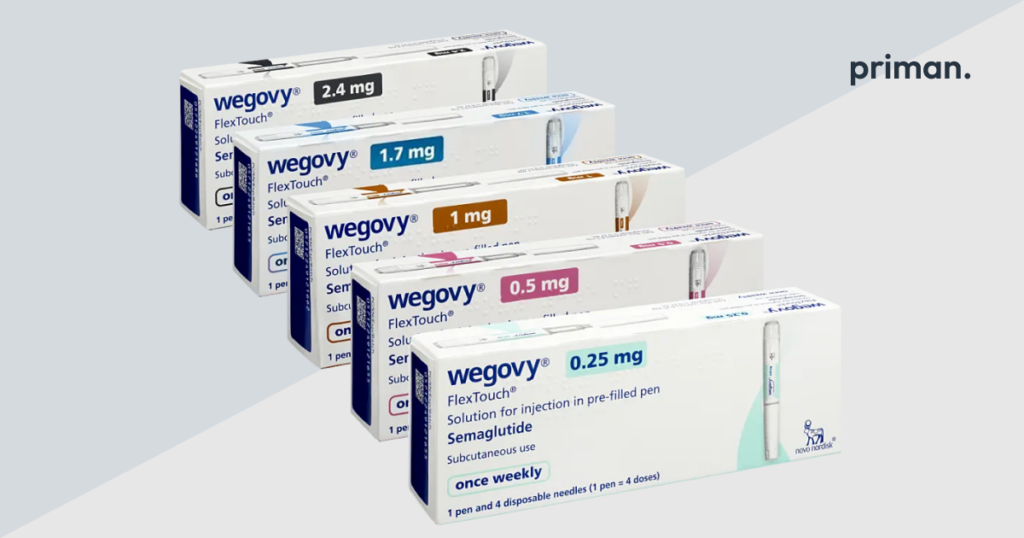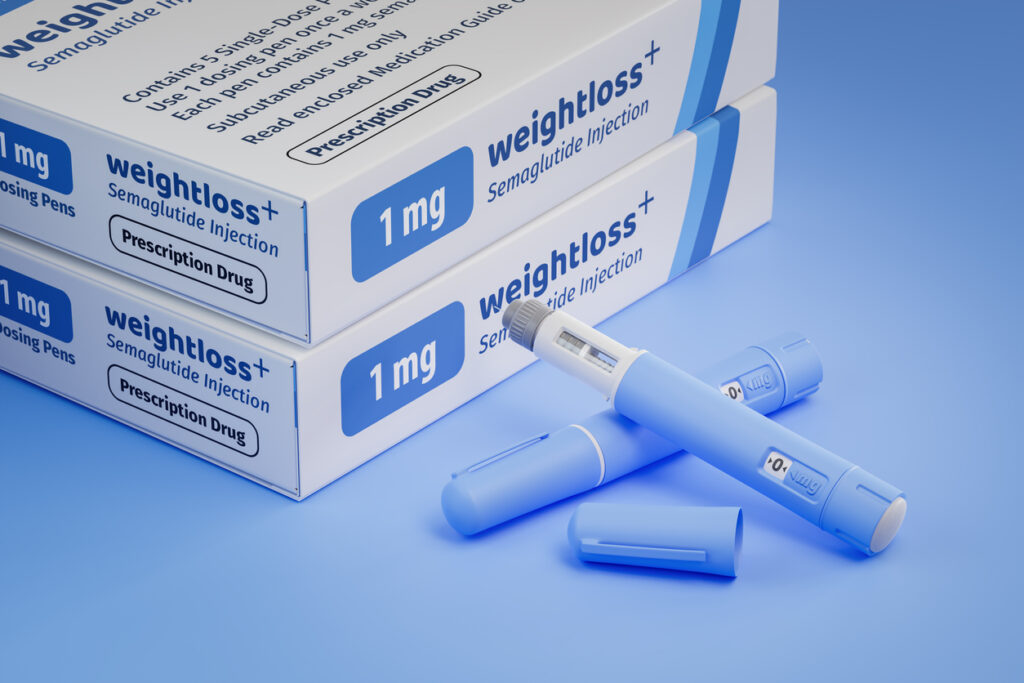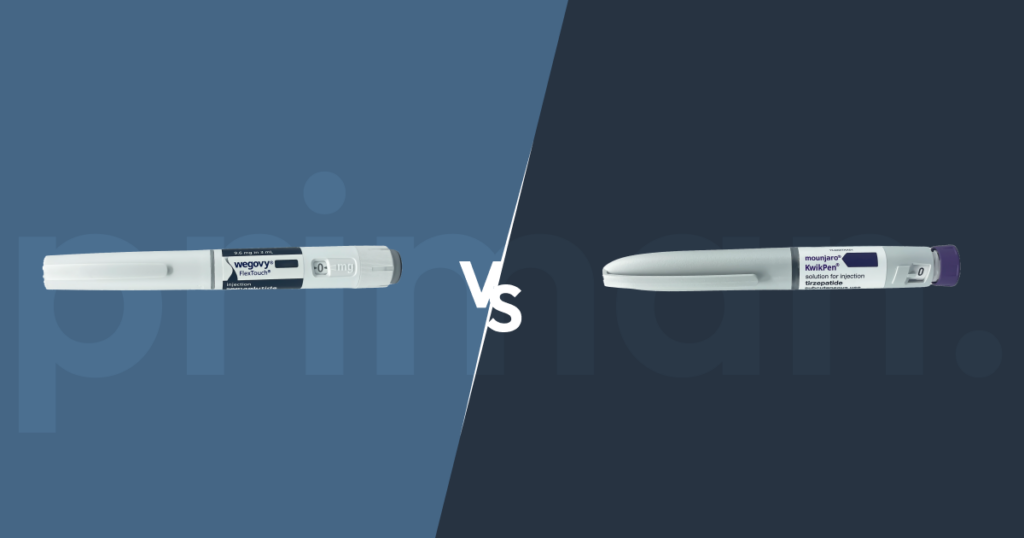Ozempic as been a hot topic in the world of weight loss and diabetes management. But with so much information (and misinformation) out there, it’s crucial to understand how this medication works, who it’s for, and what to expect. Let’s dive in!
What is Ozempic?
Ozempic is a prescription medication used primarily to manage type 2 diabetes. Its active ingredient is semaglutide, a type of medication known as a GLP-1 receptor agonist (GLP-1 RA). This medication not only helps in controlling blood sugar levels but has also gained attention for its significant role in weight loss. Therefore, Ozempic was used as an Off-Label for weight loss.
What is the Role of GLP-1 in Ozempic?
GLP-1 (glucagon-like peptide-1) is a hormone naturally produced in the gut that has several functions:
- Stimulates Insulin Secretion: It helps the pancreas release insulin in response to meals, which lowers blood sugar levels.
- Suppresses Glucagon: GLP-1 reduces glucagon production, a hormone that increases blood sugar levels.
- Slows Gastric Emptying: This helps in prolonging the feeling of fullness, which can aid in weight management.
- Promotes Satiety: By affecting appetite control in the brain, GLP-1 helps reduce food intake.
In Ozempic, semaglutide mimics GLP-1, thereby enhancing its effects on blood sugar control and appetite regulation.
Why is Ozempic Prescribed Off-Label?
Ozempic is prescribed off-label for weight loss in individuals without diabetes due to its demonstrated effectiveness in clinical trials, even though it is primarily approved for diabetes management.
(Off-label: This means it’s being used for a purpose not officially approved by the UK’s medicines regulator (MHRA). However, this practice is legal and common when there’s strong evidence supporting the medication’s effectiveness for a specific condition.)
Healthcare professionals may recommend it for weight loss based on its efficacy in reducing appetite and promoting weight loss observed in clinical trials. However, off-label use should only be considered under the guidance and supervision of a healthcare professional.
How Does Ozempic Work?
Ozempic works by activating GLP-1 receptors, leading to several beneficial effects:
- Improved Blood Sugar Control: By stimulating insulin release and reducing glucagon, Ozempic helps lower blood sugar levels after meals.
- Reduced Appetite: It affects the brain’s hunger centres, helping to decrease appetite and food intake.
- Weight Loss: The reduced appetite and slower gastric emptying contribute to weight loss.
Clinical Studies and Weight Loss Results of Ozempic
Clinical trials have demonstrated that Ozempic is effective in both managing blood sugar levels and promoting weight loss. Key findings include about Semaglutide the active ingredient of Ozempic:
- Blood Sugar Control: Studies show that Ozempic significantly lowers HbA1c (a measure of long-term blood glucose levels) compared to other diabetes medications.
- Weight Loss: Patients using Ozempic have experienced substantial weight loss. In clinical trials, participants lost an average of 5-10% of their body weight over a period of 6-12 months.
How Effective is Semaglutide for Weight Loss?
Semaglutide, the active ingredient in Ozempic, has proven to be highly effective for weight loss, with clinical trials demonstrating consistent and significant weight reduction compared to placebo. The extent of weight loss can vary depending on individual factors, lifestyle modifications, and dosage. It has been shown to:
- Promote Weight Loss: Studies have indicated weight reductions ranging from 5% to 15% of body weight in individuals taking semaglutide over a 6-month period.
- Maintain Weight Loss: Patients are able to sustain weight loss for extended periods with continued use of the medication.
Is Wegovy and Ozempic the Same?
Wegovy and Ozempic contain the same active ingredient, semaglutide.
However, they are formulated differently and approved for different uses. Ozempic is primarily indicated for type 2 diabetes with weight loss as a secondary benefit, while Wegovy is specifically approved for chronic weight management in adults with obesity or overweight with weight-related conditions.
| Feature | Ozempic | Wegovy |
| Active Ingredient | Semaglutide | Semaglutide |
| Primary Use | Type 2 diabetes | Chronic weight management |
| Dosage | 0.25mg, 0.5mg, 1mg | 0.25mg, 0.5mg, 1mg, 1.7mg, 2.4mg |
Who Can and Cannot Take Ozempic?
Can Take:
- Adults with Type 2 Diabetes: It helps improve blood sugar control alongside diet and exercise.
- Adults with Obesity (BMI 30 or higher): It supports weight loss when used with a reduced-calorie diet and increased physical activity.
- Adults with Overweight (BMI 27 or higher) and Weight-Related Health Conditions: This includes conditions like high blood pressure or high cholesterol.
Cannot Take:
- Pregnant or breastfeeding women
- People with a personal or family history of medullary thyroid carcinoma (a type of thyroid cancer)
- History of pancreatitis
- Under 18 years old
Using Ozempic: Dosage & Administration
- Dosage
- Starting Dose: Typically 0.25mg once a week.
- Gradual Increase: The dose is increased every 4 weeks if tolerated, up to a maximum of 1mg once a week.
- Administration:
Ozempic is administered as a weekly subcutaneous injection using a prefilled pen. Your healthcare professional will guide you on the appropriate dosage and injection technique. It’s essential to follow their instructions carefully and adhere to the prescribed treatment plan.
- Missed Doses:
If you miss a dose, inject it as soon as you remember within 5 days. If more than 5 days have passed, skip the missed dose and continue with your regular schedule.
Side Effects of Ozempic and How to Manage Them
Common side effects include:
- Nausea, vomiting, diarrhoea, constipation (usually mild and improve over time)
- Headache, fatigue, dizziness
Less common but more serious side effects include:
- Pancreatitis
- Gallbladder problems
- Changes in vision
- Allergic reactions
If you experience any side effects, discuss them with your doctor. They may adjust your dose or recommend ways to manage them.
Management:
- Start Slowly: Begin with a lower dose and gradually increase to minimise gastrointestinal side effects.
- Stay Hydrated: Drink plenty of fluids if experiencing nausea or diarrhoea.
- Consult Your Healthcare professional: For persistent or severe side effects.
How to Inject, Store and Handle Ozempic Pens?
Injecting:
- Preparation:
- Wash your hands thoroughly with soap and water.
- Choose an injection site (abdomen, thigh, or upper arm).
- Clean the injection site with an alcohol swab and allow it to dry.
- Attaching a New Needle:
- Remove the pen cap.
- Peel off the paper tab from a new needle.
- Screw the needle straight onto the pen until it is firmly attached.
- Pull off the outer needle cap and set it aside.
- Pull off the inner needle cap and discard it.
- Priming the Pen:
- Turn the dose selector to select the dose prescribed by your doctor.
- Hold the pen with the needle pointing up.
- Press and hold the injection button until a drop of medicine appears at the needle tip. If no drop appears after a few seconds, repeat this step with a new needle.
- Injecting the Medicine:
- Insert the needle into the cleaned injection site at a 90-degree angle.
- Press and hold the injection button until the dose counter returns to “0”.
- Keep the needle in the skin for at least 6 seconds to ensure the full dose is delivered.
- Slowly remove the needle from the skin.
- After Injection:
- Place the outer needle cap back on the needle and unscrew it from the pen.
- Discard the used needle in a sharps container.
Storing:
- Unopened Ozempic pens should be stored in the refrigerator between 2°C to 8°C (36°F to 46°F). Do not freeze.
- After the first use, the pen can be kept at room temperature (below 30°C or 86°F) or in the refrigerator.
- Keep the pen capped when not in use.
- Protect the pen from light.
- Once the pen is opened, it should be used within 56 days, even if it’s stored in the refrigerator.
Handling:
- Do not share your Ozempic pen with anyone else, even if the needle has been changed.
- Always use a new needle for each injection.
- Do not use the pen if the solution is cloudy, discoloured, or contains particles.
- Do not drop or damage the pen.
- Keep the pen out of the reach of children.
Important Note: Always consult your healthcare professional if you have any questions or concerns about using Ozempic pens.
Where to Buy Ozempic in the UK and What is the Price?
In the UK, Ozempic is a prescription-only medication, meaning you can only obtain it with a valid prescription from your doctor or a registered healthcare professional. Here are the main places where you can buy Ozempic in the UK.
Where to Buy:
- NHS: If you have type 2 diabetes, you may be able to get Ozempic through the NHS. However, eligibility criteria may apply. Talk to your doctor to see if you qualify.
- Private Clinics: Some private clinics specialising in weight loss or diabetes management offer Ozempic. They will usually require a consultation and assessment before prescribing the medication. [https://www.priman.co/]
- Online Pharmacies: Several online pharmacies in the UK offer Ozempic, but it’s crucial to choose a reputable and regulated pharmacy to ensure the authenticity and quality of the medication. [https://www.primedpharmacy.com/]
Price:
The price of Ozempic can vary depending on the dose, quantity, and the pharmacy you purchase it from.
We at Priman are committed to offering Ozempic at competitive rates to help you achieve your weight loss goals.
Is Ozempic out of Stock?
Yes, there are ongoing supply issues and intermittent shortages of Ozempic in the UK. This is mainly due to the increased demand for the medication, both for its approved use in treating type 2 diabetes and its off-label use for weight loss
Key Takeaway
Is Ozempic Right for You? Whether Ozempic is suitable for you depends on several factors, including your overall health, medical history, and treatment goals. If you’re considering Ozempic, talk to your GP or a specialist in diabetes or weight management. They can assess your individual needs and risks to determine if Ozempic is a good option.
References:
Li Y, Xu H, Bjornstad P, et al. Efficacy and safety of once-weekly semaglutide in subjects with overweight or obesity: a randomized, double-blind, placebo-controlled phase 3a trial. Lancet. 2017;389(10107):1946-57.
Drucker DJ, Ebbing D, Christensen E, et al. Incretin action in the treatment of type 2 diabetes. Lancet. 2003;361(9370):1696-703.
Nauck MA, Meier J, Drucker DJ. Glucagonostatic effects of incretin hormones. Diabetes. 2013;62(10):3254-63.
Ghusn, W. et al. (2022) “Weight loss outcomes associated with semaglutide treatment for patients with overweight or obesity,” JAMA network open, 5(9), p. e2231982. doi: 10.1001/jamanetworkopen.2022.31982.
Healthcare products Regulatory Agency (2023) Falsified Ozempic (semaglutide) pens identified at two wholesalers in the UK, Gov.uk. Available at: https://www.gov.uk/government/news/falsified-ozempic-semaglutide-pens-identified-at-two-wholesalers-in-the-uk
New Medicine Assessment Semaglutide (2018) Nhs.uk. Available at: https://www.lancsmmg.nhs.uk/media/1139/semaglutide-new-medicine-assessment.pdf
Ozempic (2024) Europa.eu. Available at: https://www.ema.europa.eu/en/medicines/human/EPAR/ozempic
Wegovy 0.25 mg, FlexTouch solution for injection in pre-filled pen – Summary of Product Characteristics (SmPC) – (emc) (no date) Org.uk. Available at: https://www.medicines.org.uk/emc/product/13799/smpc









